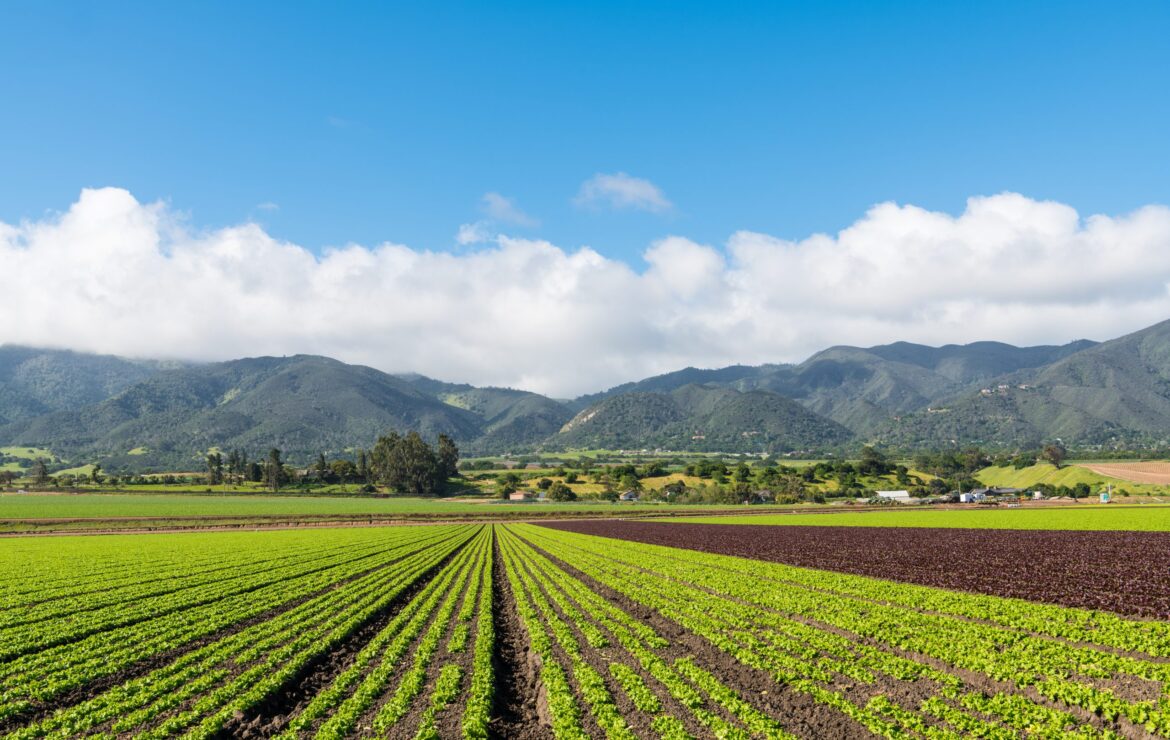
Big Data and the Agricultural Industry: The Future of Farming
If you are looking for the latest developments in technology for the agriculture sector, end your search in Salinas, Calif. – otherwise known as the “Salad Bowl of the World.” The ag industry in Salinas is worth $8 billion and the area has become the global hub for investment and innovation in agriculture technology. Farms are working smarter, using data and technology to further optimize their business and address challenges in sustainability, precision agriculture, renewable energy, and food safety.
Leveraging big data-driven technology across the AgTech space at the grower level can help result in increased production and innovation, cost savings, and better management of environmental challenges. And as we go down the supply chain line and beyond the field, technology plays a critical role in improving the management of packaging and distribution efforts.
Increased production and innovation
Global food demand is putting heavy pressure on the agricultural industry, as the demand is set to double over the next 30 years. To feed the global population, data-driven decision-making and technology will be used to improve productivity, starting with precision agriculture.
Precision agriculture is a farm management approach that uses technology and equipment to focus on profitability, efficiency, and sustainability. Precision farming starts with technology that takes information from the various farming activities to be used in decision-making for both immediate and future needs. For example, providing insight into what seed should be planted where or how much fertilizer needs to be used. Soil probes and sensors outfitted onto farm equipment can bring a new awareness of the conditions that impact planting and harvesting.
Using real-time data, growers can use a variable-rate application control system to prep your land, or maneuver farm equipment using a hands-free steering system. You can manage a number of productivity zones, each with its own unique needs, using a farm management software. Using precision ag, farmers can reduce crop input costs, water usage, and labor costs. Going further, by avoiding common pitfalls such as nutrient overuse, farmers are able to realistically increase the production of crops by as much as 30%.
Cost savings
Artificial intelligence (AI) will play a vital role in crop protection, which can equate to cost savings. Real-time monitoring of soil conditions allows for immediate adjustment of nutrient levels or water supply, and high-tech computer systems can be used to determine adjustments for parameters like weed or yield detection. Automated machines track and record the development of plants, and biosensors detect the earliest signs of disease.
AI agriculture bots, or robots for use in the farming field, will change the demands for a human labor workforce. Bots like those produced by EarthSense use high-resolution cameras and laser pulses to scan and record plant height, track the number of live grains or fruits on a plant, and measure the stem diameter. DroneDeploy uses unmanned aerial vehicles (UAVs) to map fields to conduct stand counts, identify variability, and make real-time recommendations about crop health from a centralized platform. Through reduced expenses and fewer unknown variables that negatively impact yield, farmers can see a greater return on crops when investments into AI-powered equipment and data analysis are made.
Better management of environmental challenges
There is still a lot of concern that environmental challenges and climate change will significantly impact agricultural productivity in the future. However, growers will be able to use precision farming to more closely monitor natural events and the impact these have on crop health. Predictive analysis can tell farmers about coming problems with disease or pests based on the information available from both local plant and soil analysis or trends from other locations. Farmers are given a way to proactively address the potential for crop failure or reduced production through data tracking with resource management and crop inputs.
Improved supply chain management
Approximately one-third of all food produced for human consumption is wasted or lost each year to supply chain inefficiencies, and data analytics holds the key to transforming the agricultural supply chain. Farmers, key stakeholders, distributors, and retailers all need access to the data to alter their own services and better meet the needs and demands of the market. Food delivery cycles need to be reduced, and big data can be used to track products throughout the supply chain as well as to optimize trucking routes.
Predictive systems can identify potential rotting from storage conditions and suggest preventative action to prevent spoilage. The lack of traceability in the agricultural supply chains can be overcome with digital technologies like blockchain-enabled tracking systems, which give each party involved in a transaction the ability to locate a product.
The supply chain is also impacted by equipment failure and IT security issues, where threats have grown exponentially. The harvest depends on each machine running at full strength to maximize profit, and any delay in harvesting could expose crops to damaging weather elements that delay shipment. Predictive analytics gives farmers a forecast of future mechanical problems, reducing the amount of downtime that would occur when repairs or replacements occur unexpectedly.
More than an IT consulting company
These actionable insights are just a small part of the positive changes IT and big data can bring to the agricultural industry. Working with an IT partner like ZAG helps make the most of your technology strategy. ZAG has in-depth knowledge of agriculture and the farming needs across the Western United States, but this knowledge can be effectively used to transform any farming venture to be more efficient and more productive. Contact us to learn more.